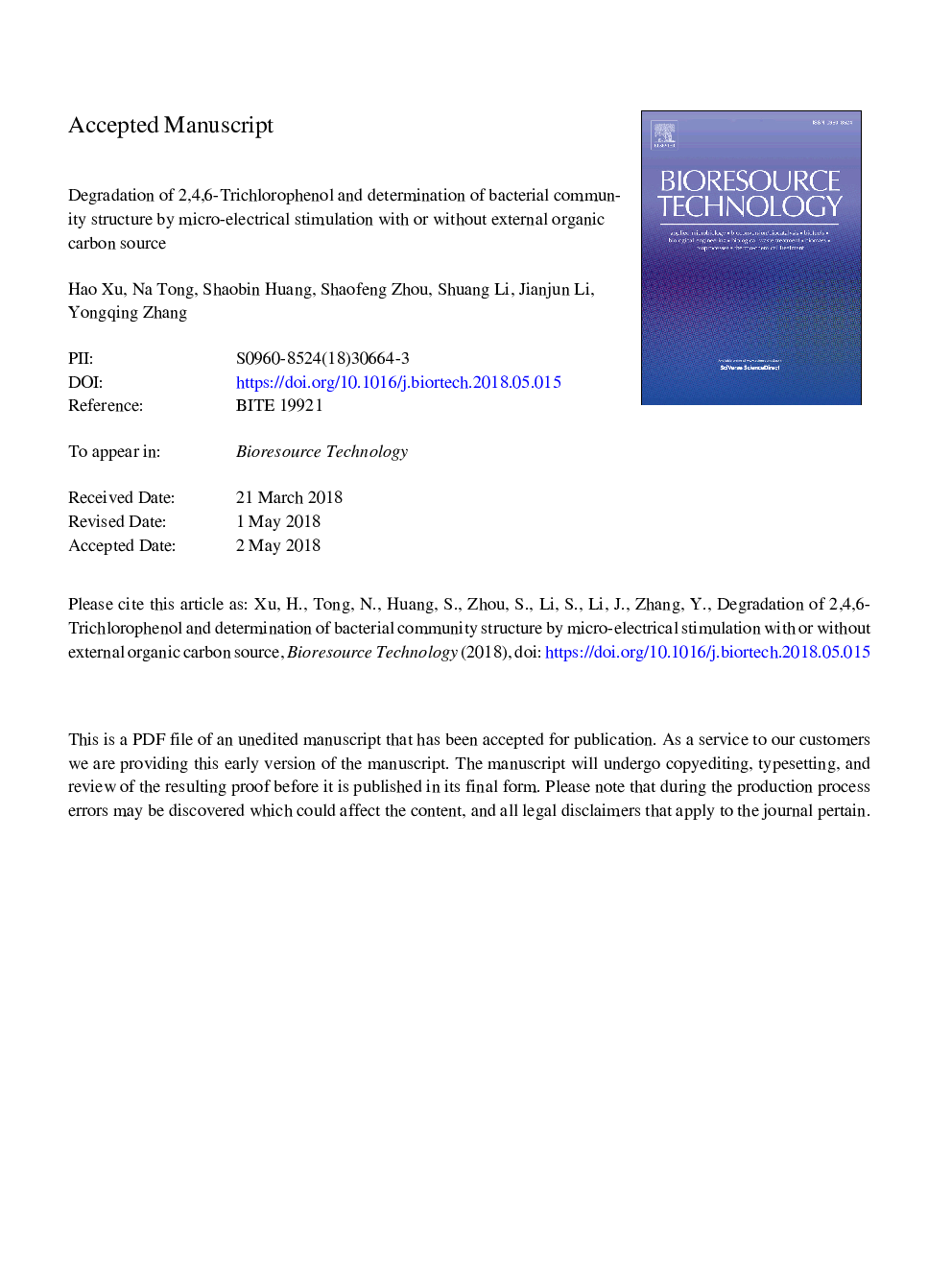| Article ID | Journal | Published Year | Pages | File Type |
|---|---|---|---|---|
| 7066564 | Bioresource Technology | 2018 | 28 Pages |
Abstract
This study aimed to investigate the degradation efficiency of 2,4,6-trichlorophenol through a batch of potentiostatic experiments (0.2â¯V vs. Ag/AgCl). Efficiencies in the presence and absence of acetate and glucose were compared through open-circuit reference experiments. Significant differences in degradation efficiency were observed in six reactors. The highest and lowest degradation efficiencies were observed in the closed-circuit reactor fed with glucose and in the open-circuit reactor, respectively. This finding was due to the enhanced bacterial metabolism caused by the application of micro-electrical field and degradable organics as co-substrates. The different treatment efficiencies were also caused by the distinct bacterial communities. The composition of bacterial community was affected by adding different organics as co-substrates. At the phylum level, the most dominant bacteria in the reactor with the added acetate and glucose were Proteobacteria and Firmicutes, respectively.
Related Topics
Physical Sciences and Engineering
Chemical Engineering
Process Chemistry and Technology
Authors
Hao Xu, Na Tong, Shaobin Huang, Shaofeng Zhou, Shuang Li, Jianjun Li, Yongqing Zhang,
